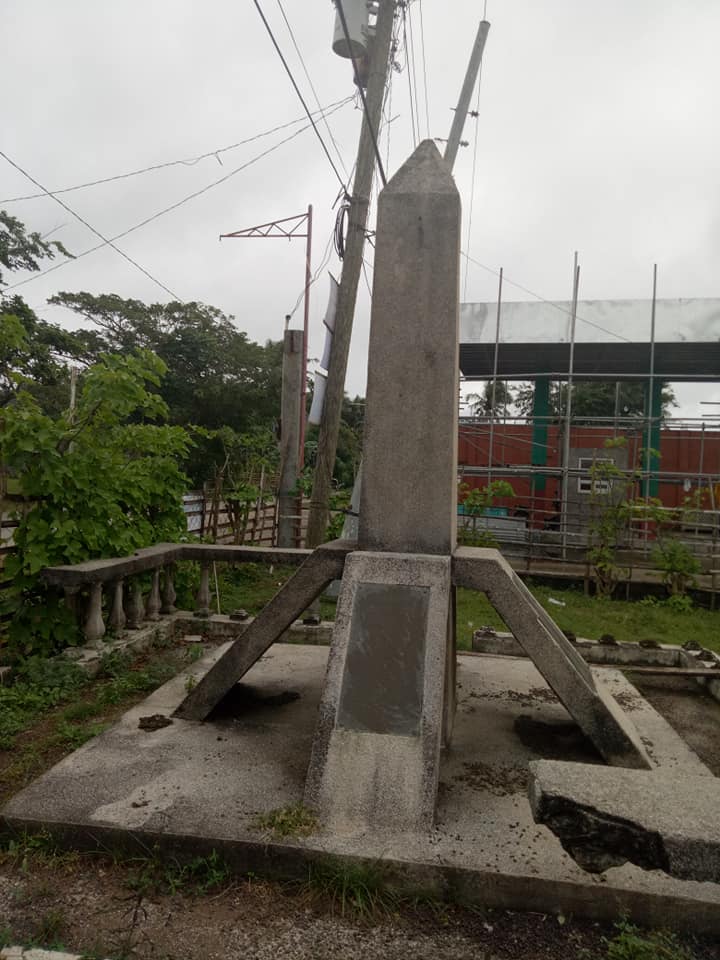5th Cavalry Regiment Monument
Details:
A concrete obelisk monument with slanted concrete slabs on each side and each slab holds a single bronze plaque. The monument is set on a concrete base and is surrounded by concrete balustrades. The plaque commemorating the US servicemen is attached on the obelisk, east face of the monument.
On 12 April, the 5th Cavalry Regiment pushed south down the Bicol Peninsula in order to link up with the 158th Regimental Combat Team and clear the area of Japanese. They completed this on 29 April after B Troop along with attached engineers launched an amphibious assault in the Ragay Gulf near Pasacao. After more fighting across Luzon and stiff battles to drive out stubborn Japanese resistance, the Luzon Campaign was officially declared over on 30 June 1945.
More information:
Troops of the 1st Cavalry Division had begun moving onto the Bicol Peninsula on 12 April 1945 when they relieved units of the 11th Airborne Division at Atimonan. The next day the 5th Cavalry struck east from Atimonan and on the 14th reached Calauag, thirty miles away. All the way from Atimonan to Calauag, Route 1 was in poor condition and beyond Calauag supply movements were almost impossible. The speed of advance now hinged on the speed of engineer road and bridge repairs. Accordingly, the 5th Cavalry secured the eastern shore of Tayabas Bay and set up a supply point at the bay's northeastern corner so that LCM's could bring forward ammunition, food, and equipment from Batangas. Beginning on 27 April the main body of the regiment began moving by LCM across Ragay Gulf, the first indentation on the south coast of the Bicol Peninsula beyond Tayabas Bay. On the 28th the regiment, encountering no resistance, moved from the shores of Ragay Gulf to Naga, eight miles northwest of barrio San Agustin, and had no trouble marching south to meet the 158th Infantry.
Guerrillas had informed XIV Corps, which acquired control of the 158th RCT on 22 April, that a Japanese force of some 2,500 men was dug in along the slopes of Mt. Isarog, an extinct volcano centering eight miles northeast of San Agustin. This report the 5th Cavalry and 158th Infantry proved false in a series of patrol actions between 2 and 15 May. The next day, the 16th, General MacNider radioed to General Griswold that the Bicol Peninsula was secure and that no signs of organized Japanese resistance remained.
The two regiments continued patrolling for some weeks until, on 6 June, the 5th Cavalry returned to southern Luzon. The 158th RCT busied itself with the problem of reorganizing and equipping guerrilla forces and in mid-June turned over responsibility for further mopping up to the Filipinos. To that time the operations to clear the Bicol Peninsula had cost the U.S. Army units involved approximately 95 men killed and 475 wounded. The Japanese had lost over 2,800 killed and 565 captured, including 350 Formosan labor troops whom the Japanese Army had left to fend for themselves.
The strategic goal of the Bicol Peninsula operation--to finish clearing the Visayan Passages--had been realized on 2 May with the contact between the 158th Infantry and the 5th Cavalry at San Agustin. The final patrolling and mopping up the two regiments undertook had provided the necessary capstones to the combined Sixth Army-Eighth Army campaign to assure the safety of the Visayan Passages for Allied shipping.
Undertaken against generally ill-equipped, poorly fed, second-class and third-class Japanese forces, the campaign had yet proved costly. U.S. Army units involved had lost roughly 300 men killed and 1,130 wounded; the Japanese, to mid-June, had lost at least 8,125 killed and nearly 750 captured. The campaign had proved logistically more important than it had strategically or tactically. Sixth Army, Eighth Army, and Allied Naval Forces had not found the Japanese coast artillery and mine fields they had expected to discover emplaced so as to endanger Allied shipping in the passages. Nevertheless, General MacArthur would ultimately have had to direct his subordinate echelons to eliminate the Japanese from southern Luzon, the Bicol Peninsula, northern Samar, and the islands of the inner passages if for no other reason than to liberate from the Japanese yoke the many thousands of Filipino inhabitants of those regions and to restore to the Filipinos their lawful government.
Source of information: en.wikipedia.org, www.ibiblio.org
Monument Text:
LANDING SITE
Unites States
Liberation Forces
27 APRIL 1945
Magtabid Beach
Caranan, Pasacao
Camarines Sur
Commemorates:
Units:
158th Regimental Combat Team
1st Cavalry Division
5th Cavalry Regiment, 1st Cavalry Division
United States Army
Wars:
WWII
Battles:
Luzon (1944-1945)
Pacific Theater
Southern Philippines Campaign (1945)
Other images :


